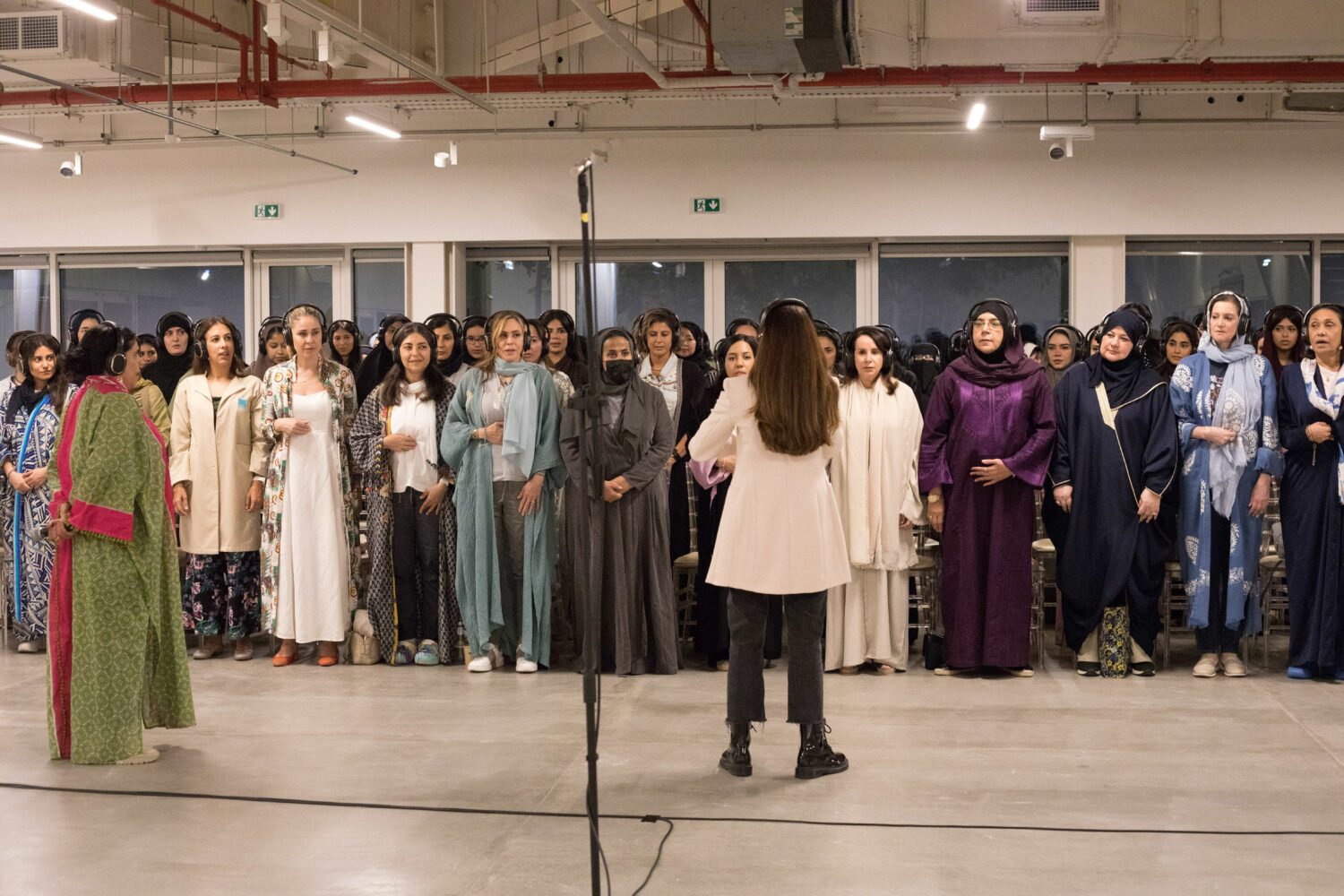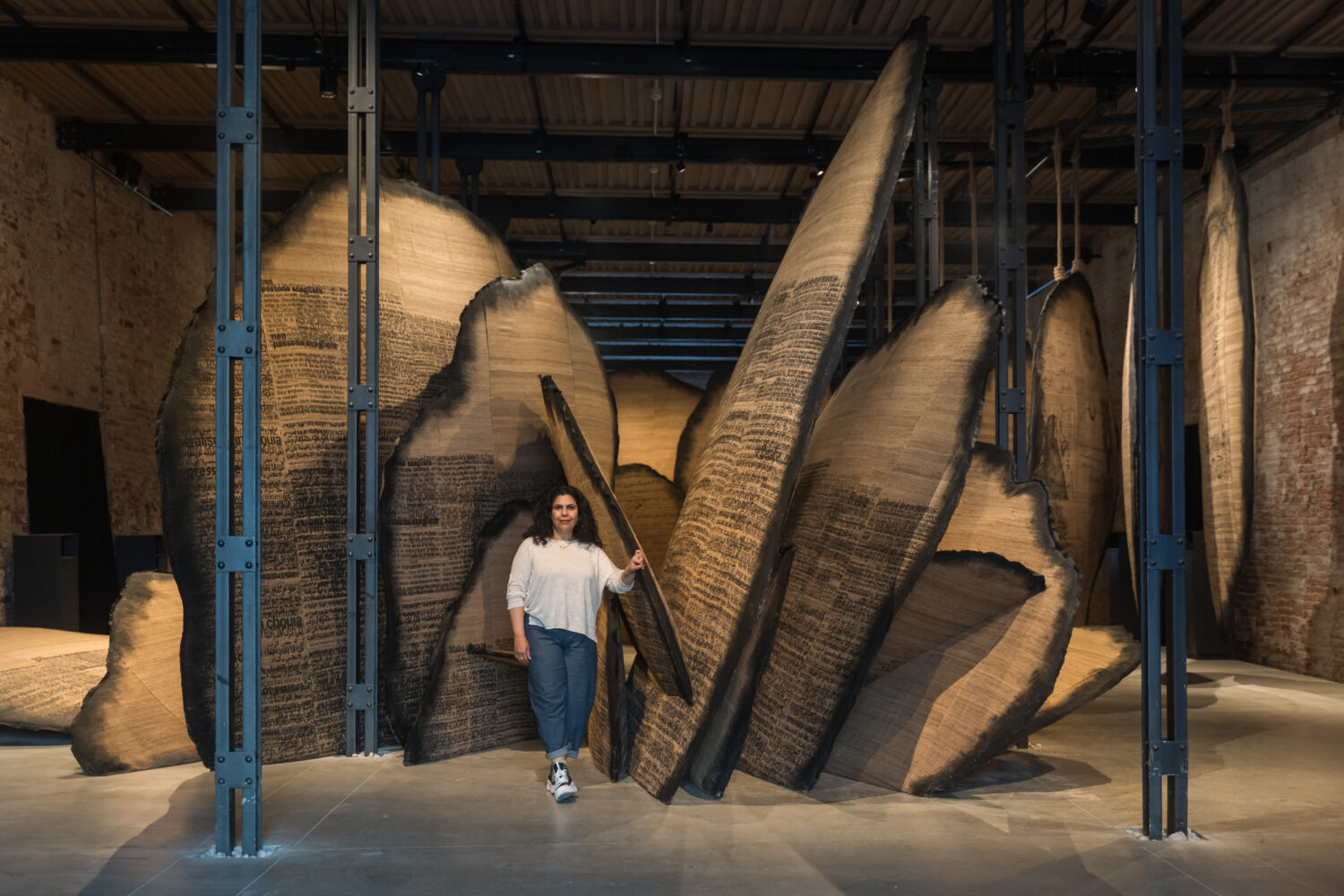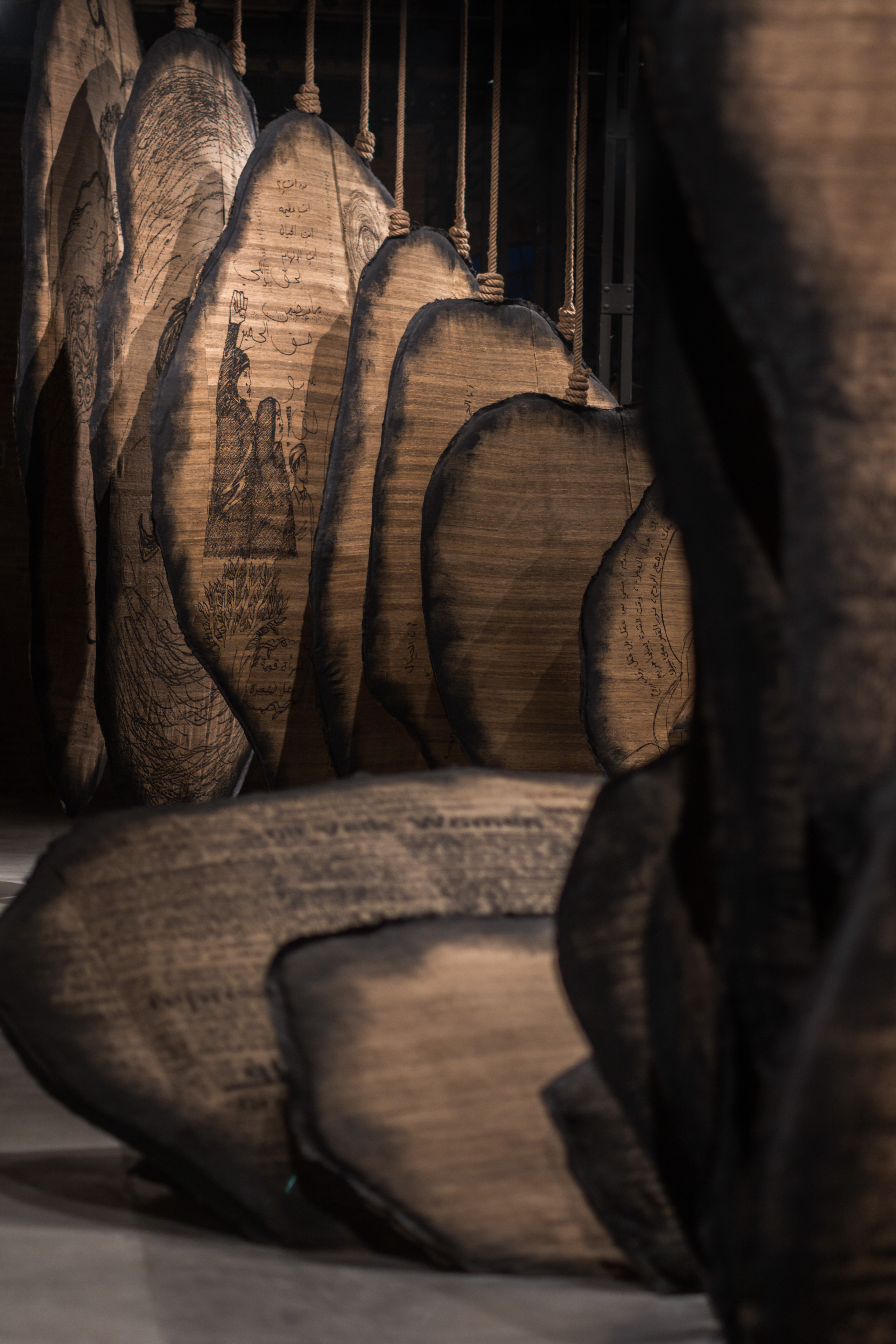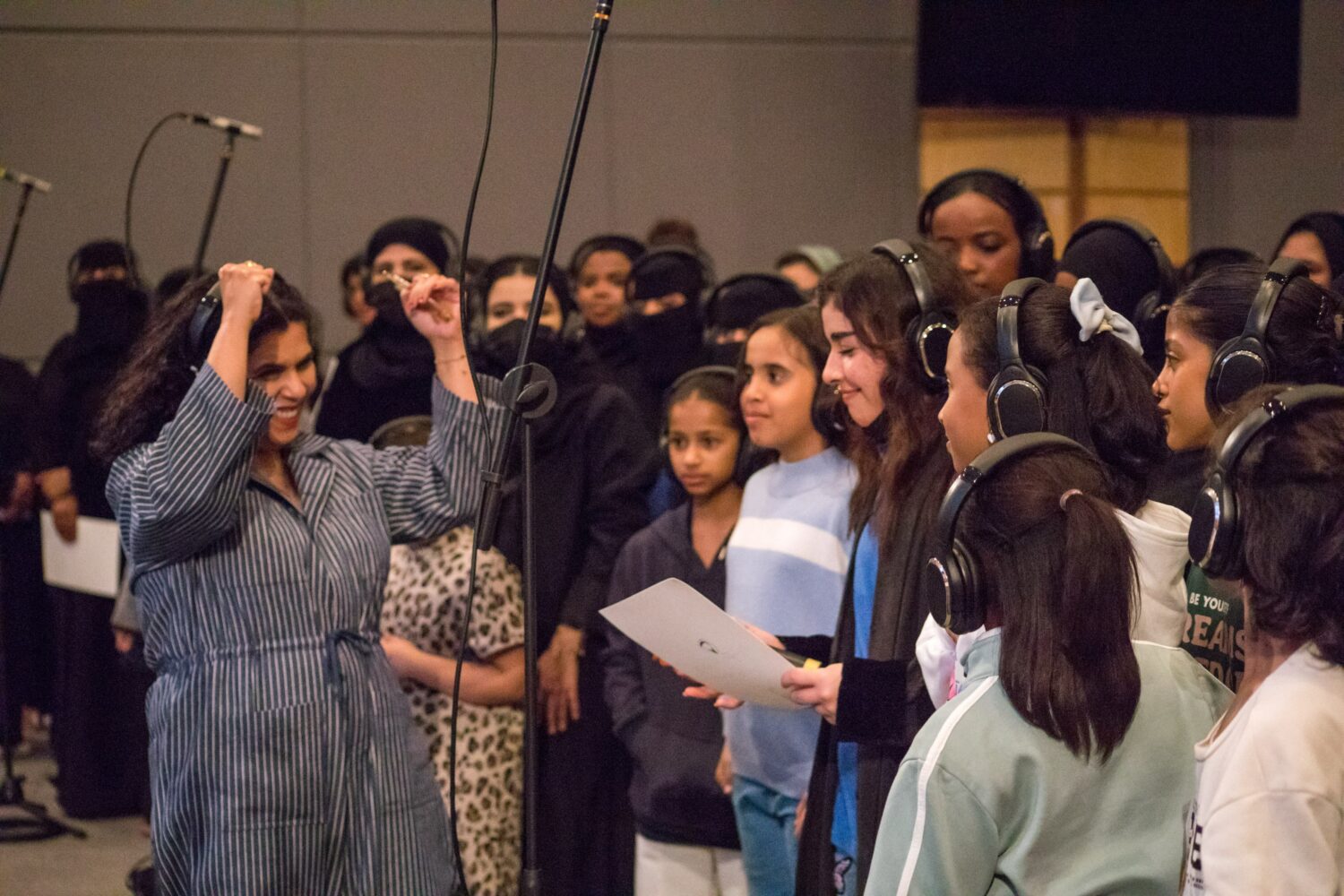Behind the Biennale: How Manal AlDowayan Is Amplifying the Voices of Saudi Women
By Jessica Cerasi, Maya El Khalil and Shadin AlBulaihedOn the occasion of the 60th Venice Biennale — open to the public from 20 April 2024 — Something Curated continues its series, Behind the Biennale. Comprising a collection of essays from the curators of select national pavilions, the series offers first-hand perspectives on some of this year’s most anticipated presentations.
Following Australian curator Ellie Buttrose’s essay, the curators of 2024’s National Pavilion of Saudi Arabia, Jessica Cerasi, Maya El Khalil and Shadin AlBulaihed, share their insights on working with artist Manal AlDowayan.

To describe an artist’s voice as resonant is to speak of its symbiotic significance in context – the artist resonates with and through. In acoustics, resonance describes the sonorous quality of a prolonged, repeating sound, requiring both a source and a reflective space to amplify and echo. From the Latin resound – literally ‘sound again’ – resonance is the original vibration and its reverberation, the primal noise once uttered and echoed, and the receptive structure that reflects and prolongs.
Manal AlDowayan’s work is sound and structure, both generative and receptive. Her participatory art practice emerges from within women’s private social spaces in Saudi Arabia. These can be conceptual counter-publics such as the diffuse open calls that invited remote contributions like Suspended Together (2011), gathering permission travel documents. They are also physical gatherings, as in Esmi (2012) and Tree of Guardians (2014), where women recorded their names and recalled their matrilineal family histories in group settings. From these intimate ‘source’ spaces, women’s presence – as ideas, statements, and contributions – blend and reverberate beyond confines, blooming into visibility.
Though subsumed into a collective utterance, each ‘voice’ retains its distinct frequency. Invisibility does not mean absence. The communal creation is a harmonious chorus, empowered by unity but not forfeiting individuality; together, voices assume a commanding presence. Manal’s role as the artist is to orchestrate this chorus, providing receptive platforms that amplify the collective. Her works become conduits where aggregated voices interweave and support rather than suppress one another, gaining strength in the solidarity of the sorority. In the exhibition, we encounter the amplified echo, resonance given form.

Though Shifting Sands: A Battle Song is the first to engage sound, past works have amplified aggregated expression in other media, such as sculpture, weaving and drawing. The communal creation happening in women’s spaces is the original vibration, literally finding a voice together where the individual can be both present and absent, subsumed in the visible as a collective enunciation. The same is true of AlDowayan’s role as the artist – she is a channel, the work a platform for proliferation.
Since her earliest mid-noughties works, AlDowayan has been a pioneer of the Saudi contemporary art scene, her thinking moving lockstep with the narrative arc of women’s changing status. Looking back, she recognises how her artworks have become historical markers, documenting communities through a period of radical social transformation. The works stand as waystations in stories of women, tradition, and transfiguring social worlds.
Her installation and participatory event, staged at the Solomon R. Guggenheim Museum in New York, From Shattered Ruins, New Life Shall Bloom (2023), expanded the artist’s research into media judgments on women’s bodies to international contexts. In a collective action, visitors were invited to crush porcelain scrolls printed with this archive together at the same moment, enacting a bold jettisoning of the past. The sound of hundreds of porcelain scrolls cracking echoed throughout the Guggenheim’s rotunda and a hush descended on the crowd, as participants were confronted with a powerful sense of their own individual and collective presence.

A pivot has occurred in Shifting Sands: A Battle Song; now, AlDowayan is looking forwards. The past is still present as an archive of words and headlines printed on the petals of monumental desert roses, but it recedes, sinks into the folds, printed in such a way that it resists legibility. Instead, the future arrives through voices that morph and meld with the sonic atmospheres of the desert.
As the audience moves through the space, there is a sensorial cumulation as difficult-to-decipher elements layer on and within one another, forming an enveloping climate where nothing is fixed. Aural and visual focus are conflicted, the audio becoming an almost physical, immersive matter, the desert roses inscrutable.
Atmospheric pressure builds between the subtle violence of the words emblazoned on the desert rose – headlines that impose constricting external perspectives on Saudi women – and the elemental power of humming growling sounds so resonant they could become tangible. In singing workshops, women emulated the singing dunes of Rub‘ al-Khali – the Empty Quarter, the desert that dominates the southern third of the Arabian Peninsula. The sonic atmosphere eddies with a guttural symphony that combines the expressions of land and women.

In the vast expanses of The Empty Quarter, towering sands hum and sing and dunes drone. As people move down their surface, the whole body of the earth begins to vibrate in response, sound emanating from deep within, producing a sonic envelope that ricochets between and fills the area around the colossal sands. The song of the desert has long inspired stories of spirits. It moves around and through the air, swarming and containing you. The sound lulls and hypnotises, resonating with myth and the drones of war.
The sound that fills the pavilion is the traces of the booming dunes and the voices of women singing with the land, drawing from deep within their bodies. Appropriating and transforming the structure of the Dahha, conventionally performed by men, the two sources – land and history – swirl around each other, intermixing to create something entirely their own. The voices of Saudi women blend with the singing dunes, drawing the elemental music of the desert into the guttural harmonic chants that defiantly reject the words printed about them, defying misconceptions to proclaim a position that boldly encounters the future on their own terms.
Feature image: Manal AlDowayan, Shifting Sands: A Battle Song, 2024. Photography by venicedocumentationproject. Courtesy of the Visual Arts Commission, the Commissioner for the National Pavilion of Saudi Arabia.